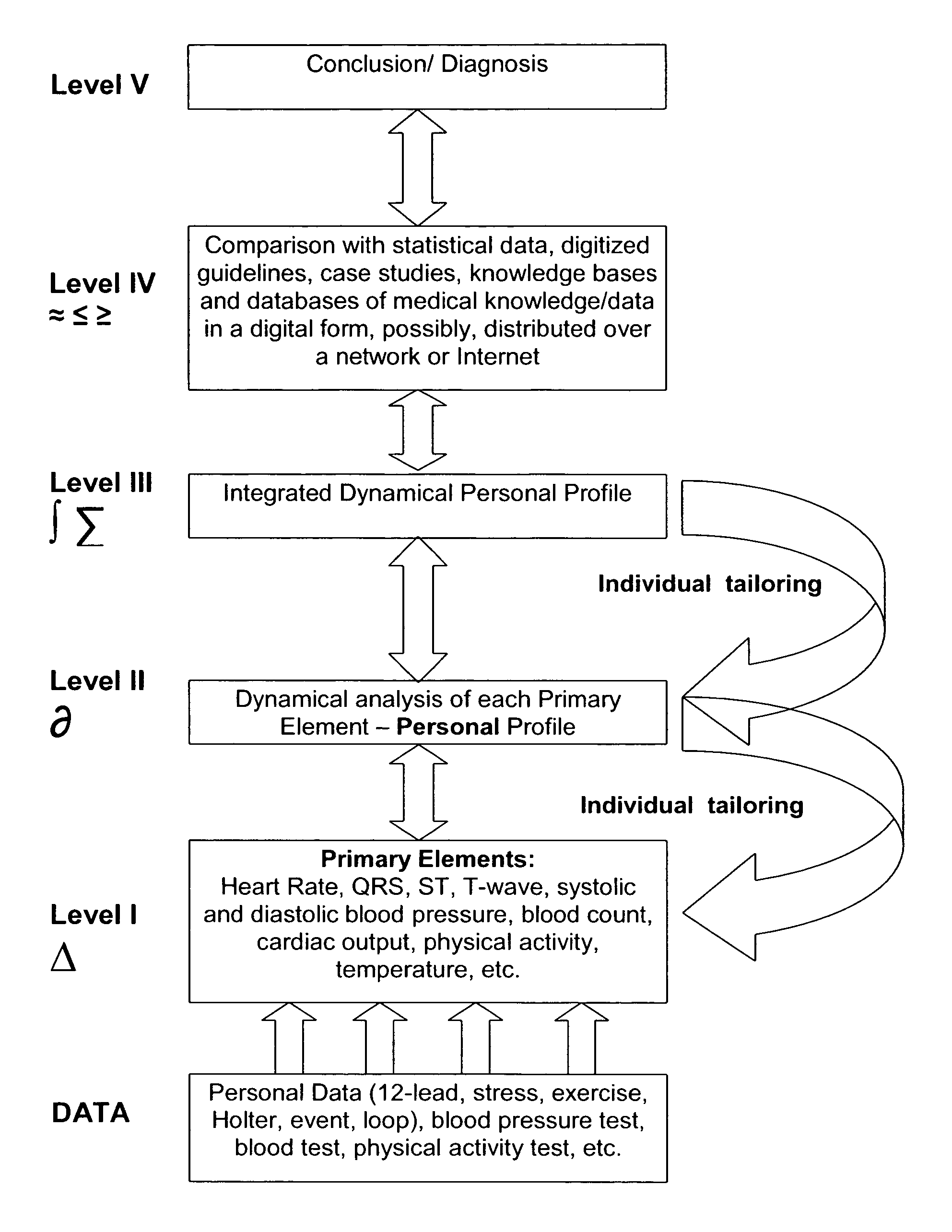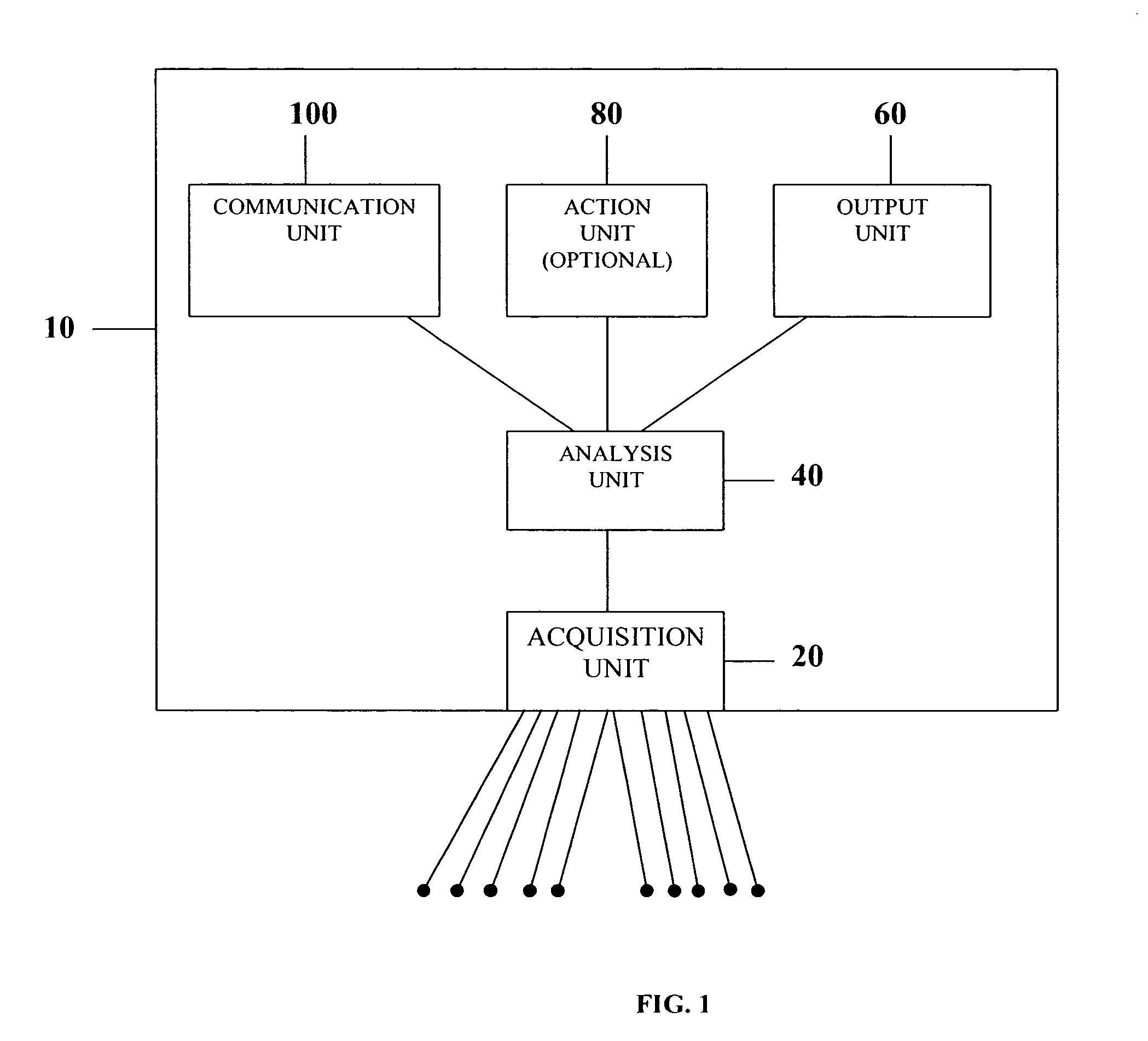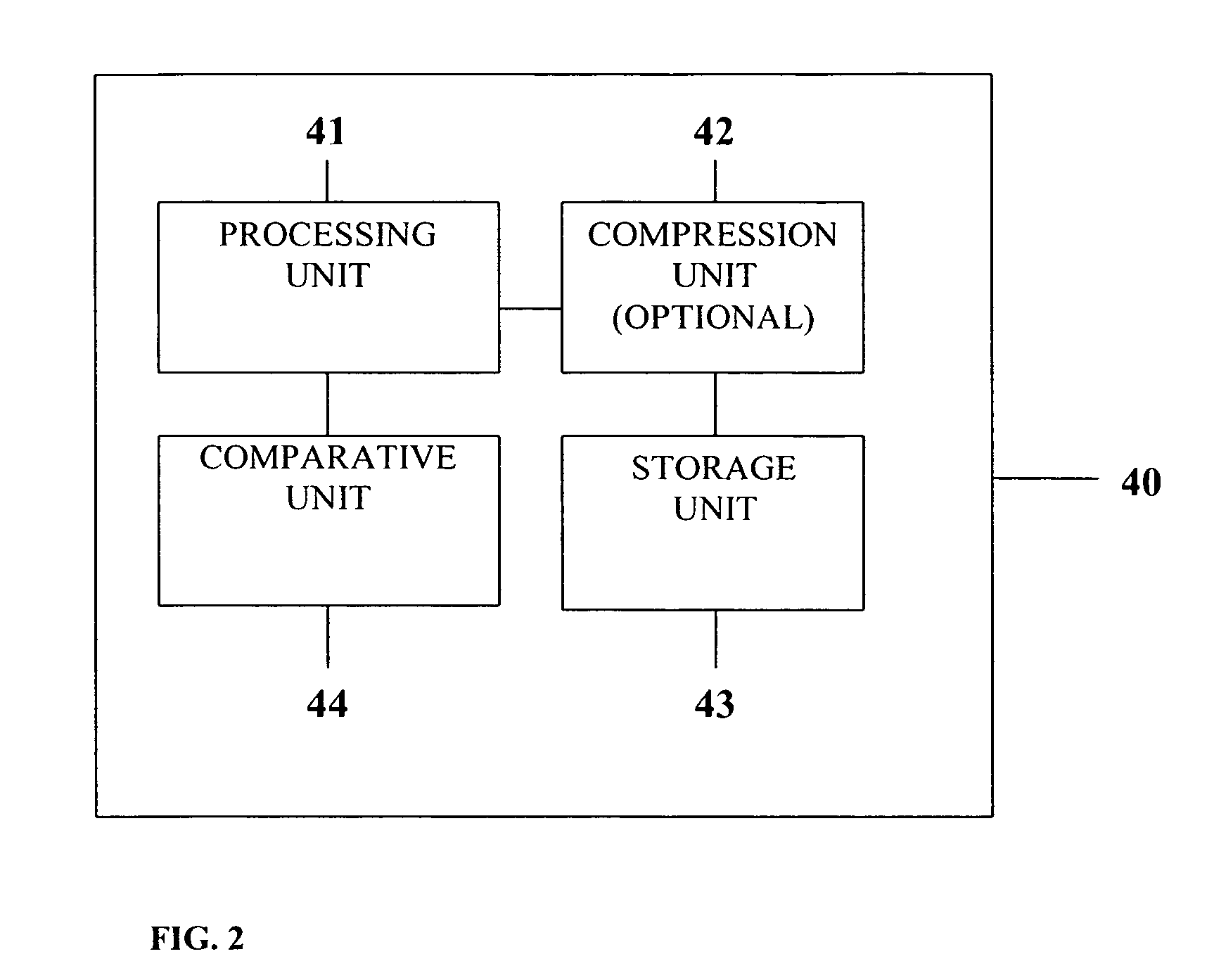Digital healthcare information management
a technology of information management and digital healthcare, applied in the field of medical information management, diagnosis, decision support, can solve the problems of medical information processing, unstructured and unstructured decision process, inability to quantify or structure, etc., to improve the analysis, improve the flow of information along the network, and increase the effect of tim
- Summary
- Abstract
- Description
- Claims
- Application Information
AI Technical Summary
Benefits of technology
Problems solved by technology
Method used
Image
Examples
example i
[0101]The following example illustrates the sequence of ECG analysis at the system's Scales I, II and III. Serial ECG recordings from a patient A who had a structural heart disease and dynamic changes in the electrocardiogram were processed at each Scale with a different degree of detail. Scale I revealed the changes in a small number of important, primary elements using minimum computational resources. Scale II exposed changes in the primary elements that occurred in serial recordings over time. Scale III provided complete description of the serial ECG changes using a complete set of primary elements and their combinations.
[0102]System Initialization.
[0103]When the system is used for the first time, initialization is required for verification and individual adjustment of the analysis criteria including identification of the primary elements and their search criteria. System initialization is performed using the hardware and software resources of the intermediate resolution Scale II...
example ii
[0113]The following example illustrates the sequence of ECG analysis at the system's Scales I, II and III. Serial ECG recordings from a patient A, who had a structural heart disease and dynamic changes in the electrocardiogram were processed at each Scale with a different degree of detail. Scale I revealed the changes in a small number of important, primary elements using minimum computational resources. Scale H exposed changes in the primary elements that occurred in serial recordings over time. Scale III provided complete description of the serial ECG changes using a complete set of primary elements and their combinations.
[0114]System initialization. When the system is used for the first time, initialization is required for verification and individual adjustment of the analysis criteria including identification of the primary elements and their search criteria. System initialization is performed using the hardware and software resources of the intermediate resolution Scale II and ...
example iii
[0121]This theoretical example has been selected to show how the present invention could be implemented using a distributed network of computers with parallel processing and how it can be efficiently integrated with such methods of artificial intelligence as neural networks and expert systems to process different types of serial information obtained from a patient with chronic congestive heart failure. Patients with chronic illnesses often have a number of chronically or intermittently abnormal indicators, whose dynamics are difficult to discern. A network of computers allows fast and accurate processing of the patient's information obtained using different diagnostic techniques (such as biochemical, electrocardiographic, nuclear magnetic resonance, stress-test, and other modalities).
[0122]In a hypothetical patient B. with chronic congestive heart failure (Class II) and a three-year-old myocardial infarction, the above-described high-resolution analysis of serial ECG recordings coul...
PUM
 Login to View More
Login to View More Abstract
Description
Claims
Application Information
 Login to View More
Login to View More - R&D
- Intellectual Property
- Life Sciences
- Materials
- Tech Scout
- Unparalleled Data Quality
- Higher Quality Content
- 60% Fewer Hallucinations
Browse by: Latest US Patents, China's latest patents, Technical Efficacy Thesaurus, Application Domain, Technology Topic, Popular Technical Reports.
© 2025 PatSnap. All rights reserved.Legal|Privacy policy|Modern Slavery Act Transparency Statement|Sitemap|About US| Contact US: help@patsnap.com



